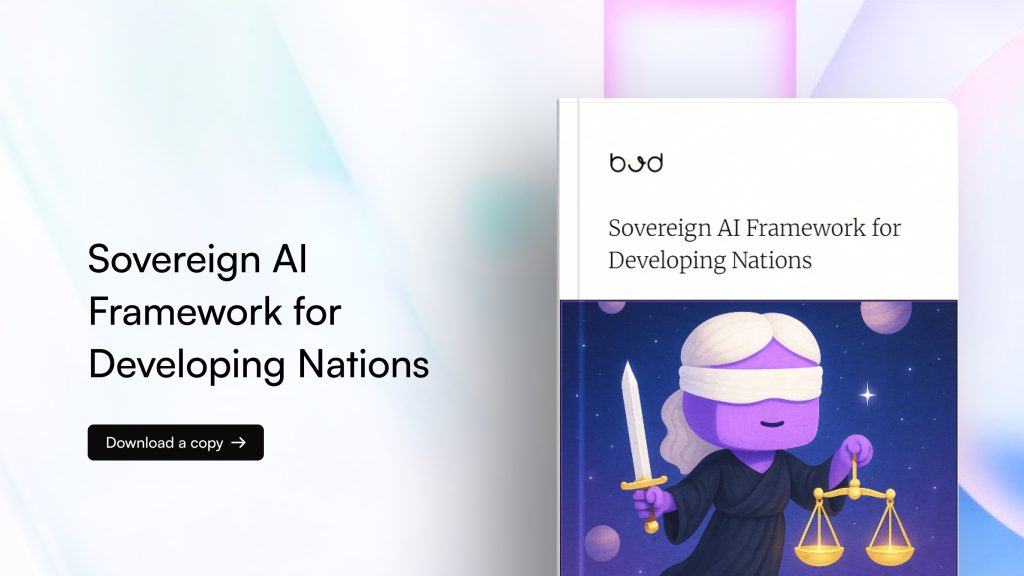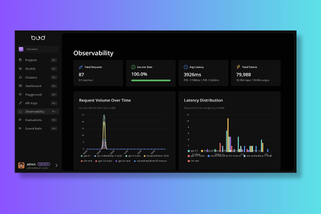The global AI landscape shows a significant gap in infrastructure between developed and developing countries. For instance, the United States has about 21 times more data center capacity than India. This research shows that software-based optimization strategies, architectural innovations, and alternative deployment models can greatly reduce reliance on large infrastructure. By analyzing current capacity data, emerging optimization techniques, and successful examples like DeepSeek’s cost-effective training methods, this paper demonstrates that developing countries can achieve competitive AI capabilities through strategic software innovations—such as model architecture improvements, federated inference systems, and resource-aware deployment strategies—reducing reliance on massive infrastructure investments and helping to close the 21x infrastructure gap, thereby enabling fuller participation in the global AI ecosystem.
Key objectives of this Whitepaper
- Benchmarking the Global Compute Divide: Quantify the present gap in datacenter power (e.g., ≈21 GW in the U.S. vs. ≈1 GW in India), accelerator inventory, energy costs, and talent pools across representative developed and developing countries.
- Diagnosing True Constraints: Distinguish bottlenecks that require capital-heavy fixes (power grids, fabs) from those solvable through software (kernel fusion, quantisation, alternative architectures).
- Curating High-Leverage Software Levers: Catalogue and experimentally validate optimisations—FlashAttention-class kernels, BitNet-style extreme quantisation, Mamba/SSM architectures, DeepSeek-style low-cost training—that together can deliver ≥ 20× aggregate efficiency.
- Formulating the “Chandrayaan Way” Framework: Translate India’s frugal-innovation ethos into a repeatable playbook: design for CPU + edge first, leverage community LoRA/adapters, and federate inference to tap existing client hardware.
- Mapping a Phased Implementation Path: Provide a five-year schedule, investment range, and KPI dashboard to track progress toward sovereignty in AI capability without trillion-dollar hardware outlays.
What is Sovereign AI?
Sovereign AI refers to a nation’s full control over the entire AI stack—including infrastructure (compute, storage, networking), data (collection, processing, governance), algorithms (models, frameworks, applications), and talent (researchers, engineers, operators). It embodies technological self-determination in the AI era. The strategic value of sovereign AI goes beyond technology. Nations with sovereign AI capabilities can:
- Preserve cultural and linguistic identity by developing AI systems that reflect and understand local contexts.
- Ensure data sovereignty by keeping citizen data within national borders.
- Foster economic growth through homegrown AI innovation and reduced reliance on foreign technology.
- Protect national security by securing critical AI infrastructure
- Define AI governance based on national values and priorities
However, current AI development is largely dominated by a few major technology companies and powerful nations, creating significant risks for developing countries.
The Cost of Dependency
- Economic drain: Relying on foreign cloud-based AI services can cost developing countries billions in foreign exchange each year
- Data colonialism: When citizen data is processed abroad, it compromises national data sovereignty
- Cultural erasure: AI models trained predominantly on Western data often fail to reflect local languages, values, and traditions
- Technological lock-in: Dependence on proprietary AI systems stifles local innovation and limits long-term flexibility
- Security vulnerabilities: Outsourcing critical AI infrastructure increases exposure to foreign interference and cybersecurity threats
Sovereign AI is not merely a technological aspiration; it is a fundamental matter of economic independence and national security. Nations with robust sovereign AI capabilities gain significant advantages. They can promote digital self-determination, ensuring that algorithmic decision-making respects and protects citizen rights. This builds trust in AI applications deployed in sensitive sectors like healthcare, defense, education, and public safety. Furthermore, it allows nations to maintain economic leverage in global technology markets and support industrial competitiveness through continuous innovation.2 The ability to control critical digital infrastructure and align AI systems with democratic values is foundational for building thriving local economic ecosystems around AI innovation, fostering self-reliance and long-term prosperity.
The broad scope of principles underlying Sovereign AI, encompassing strategic interests, cultural values, legal frameworks, economic independence, and national security, indicates that nations are not simply seeking to acquire AI technology. Instead, the objective is to deeply integrate AI within their societal fabric and governance structures, safeguarding their unique values and ensuring long-term self-determination. This approach signifies a comprehensive national strategy that extends far beyond technical control, embedding AI within a nation’s identity and resilience.











.png)


